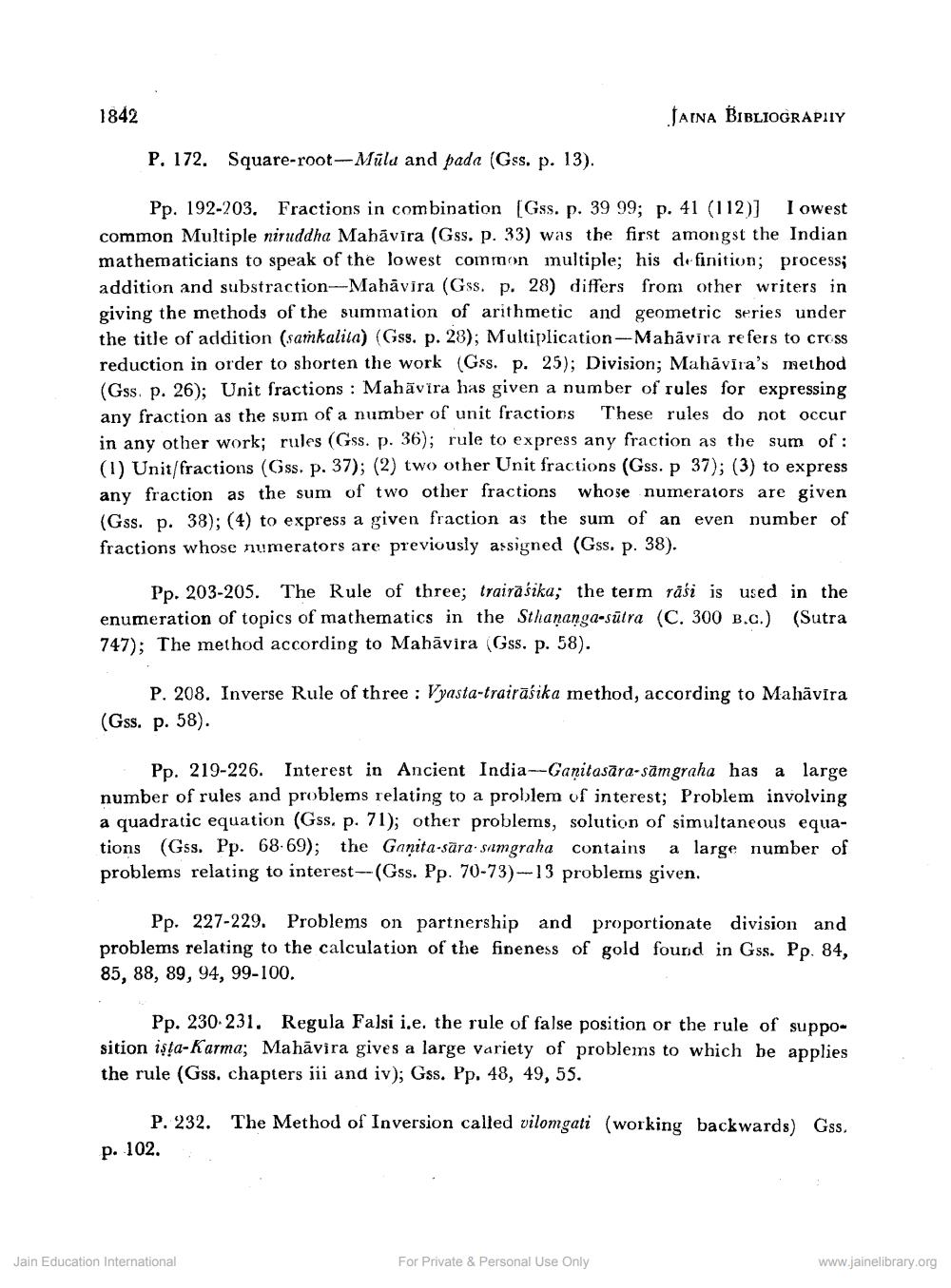________________
1842
P. 172. Square-root-Mila and pada (Gss. p. 13).
Pp. 192-203. Fractions in combination [Gss. p. 39 99; p. 41 (112)] common Multiple niruddha Mahāvira (Gss. p. 33) was the first amongst the Indian mathematicians to speak of the lowest common multiple; his definition; process; addition and substraction-Mahavira (Gss. p. 28) differs from other writers in giving the methods of the summation of arithmetic and geometric series under the title of addition (samkalita) (Gss. p. 28); Multiplication-Mahavira refers to cross reduction in order to shorten the work (Gss. p. 25); Division; Mahavira's method. (Gss. p. 26); Unit fractions: Mahavira has given a number of rules for expressing any fraction as the sum of a number of unit fractions These rules do not occur in any other work; rules (Gss. p. 36); rule to express any fraction as the sum of: (1) Unit/fractions (Gss. p. 37); (2) two other Unit fractions (Gss. p 37); (3) to express any fraction as the sum of two other fractions whose numerators are given (Gss. p. 38); (4) to express a given fraction as the sum of an even number of fractions whose numerators are previously assigned (Gss. p. 38).
JAINA BIBLIOGRAPHY
Pp. 203-205. The Rule of three; trairasika; the term rasi is used in the enumeration of topics of mathematics in the Sthananga-sütra (C. 300 B.C.) (Sutra 747); The method according to Mahavira (Gss. p. 58).
P. 208. Inverse Rule of three: Vyasta-trairasika method, according to Mahavira. (Gss. p. 58).
Pp. 219-226. Interest in Ancient India-Ganitasara-samgraha has a large number of rules and problems relating to a problem of interest; Problem involving a quadratic equation (Gss, p. 71); other problems, solution of simultaneous equations (Gss. Pp. 68-69); the Ganita-sära samgraha contains a large number of problems relating to interest-(Gss. Pp. 70-73)-13 problems given.
Pp. 227-229. Problems on partnership and proportionate division and problems relating to the calculation of the fineness of gold found in Gss. Pp. 84, 85, 88, 89, 94, 99-100.
Pp. 230-231. Regula Falsi i.e. the rule of false position or the rule of supposition isfa-Karma; Mahavira gives a large variety of problems to which he applies the rule (Gss. chapters iii and iv); Gss. Pp. 48, 49, 55.
P. 232. The Method of Inversion called vilomgati (working backwards) Gss.
p. 102,
Jain Education International
For Private & Personal Use Only
www.jainelibrary.org




